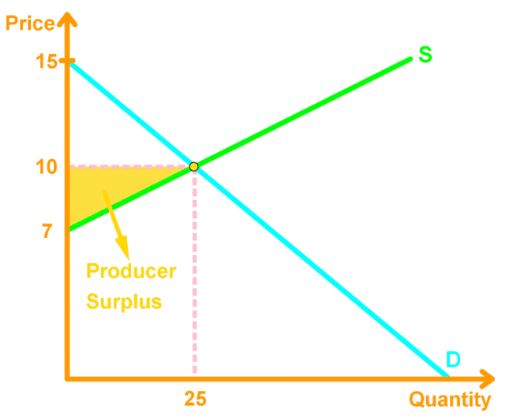Consumer Surplus
Consumer Surplus: the difference between what consumers are willing to pay and what they actually pay.
Algebraically, we calculate this as
Graphically, we calculate this by finding the area under the demand curve and above the price paid, up to the quantity bought. Since the demand and supply curve are linear, most of the consumer surplus we see are triangles.

Recall the area of triangle is:
Producer Surplus
Producer Surplus: the difference between what price the producers receive from the good and the minimum price the producer is willing to accept.
Algebraically, we calculate this as
Graphically, we calculate the area that is above the supply curve and below the price sold, up to the quantity supplied. Once again, the area we see are usually triangles.

Economic Surplus
Economic Surplus: is the total benefit gained from both the consumer and producer. In other words, it is the sum of the consumer surplus and producer surplus.
Our goal is to always maximize economic surplus. Economic surplus is always maximized at the market equilibrium, which we consider to be efficient.






